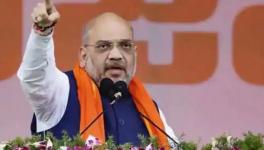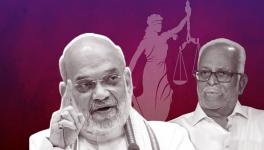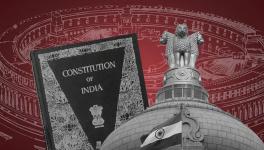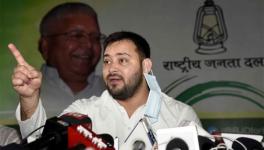Hindi Imposition: Another Attack on States’ Autonomy
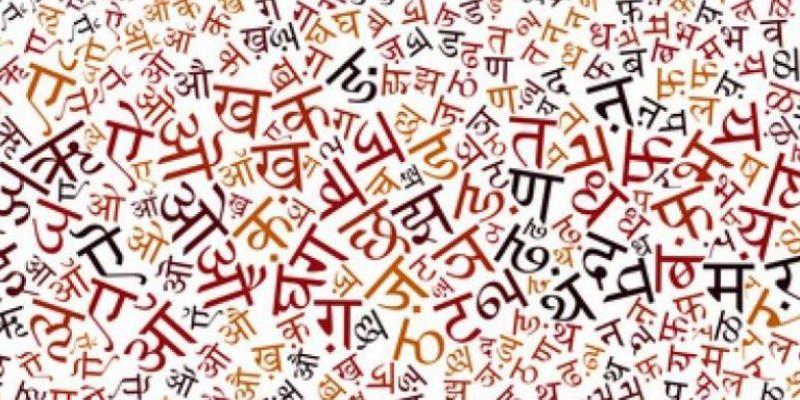
Image Courtesy: Wikimedia Commons
Union Home Minister Amit Shah led the Committee of Parliament on the Official Language has submitted its 11th report to President Droupadi Murmu, where it recommends that the “Use of Hindi as the medium of instruction and other activities should be Hindi in all technical and non-technical institutions in the country and use of English should be made optional."
The Union government's educational institutes include the All India Institute of Medical Sciences (AIIMS), Indian Institutes of Management (IIMs), and Indian Institutes of Technology (IITs). Navodaya Vidyalayas (NVs), Kendriya Vidyalayas (KVs), and other central universities.
BACKGROUND
The Official Languages Act of 1963 allowed for the creation of the Committee in 1976. Thirty members of Parliament make up the panel; 20 are from the Lok Sabha, and ten are from the Rajya Sabha. It evaluates the development in using Hindi for official purposes and submits a report with recommendations to the President.
Debates in the Constituent Assembly for Hindi were predominantly led by R.V Dhulekar, who stated that people who did not know Hindi did not deserve to live in India. Despite protests from other members, Hindi was adopted by the Constituent Assembly as the Official Language of the Union on 14th September 1949. However, as a compromise, it was decided that English would also remain the Official Language of the Union for 15 years.
This compromise, though, ran into opposition.The linguistic issue "probably signifies life and death for the South," according to T A Ramalingam Chettiar, the Assembly representative for Coimbatore. He noted that Hindi was just as alien to the Southas English.
When the 15-year term ended, protests broke out in significant areas of non-Hindi-speaking India, particularly in Tamil Nadu. In January 1965, riots started in Madurai and quickly extended to Madras. Due to the opposition, the Official Languages Act was passed by the Centre, stipulating that Hindi and English would both remain recognised as official languages.
MULTIPLICITY OF LANGUAGES IN INDIA
The 8th Schedule of the Constitution has 22 officially recognised languages in India. India is also home to over 100 non-scheduled languages, each of which has a population of over 10,000 speakers. It has 1,800 mother tongues, more than 700 different languages, many dialects, and unrecognised or minor tongues.
Around 56% of people in India do not see Hindi as their mother tongue. However, even the figures which led to Hindi being seemingly spoken by such a large number of people are also convoluted.
Between 1961 and 2011, the number of Hindi speakers increased dramatically, from 30.39%(13.34 crore) of India's population to 43.63% (52.83 crore). However, it did so at the expense of other languages that shared characteristics with it without receiving their full respect. An examination of Census data reveals that it is an instance of revelling in borrowed glory. Consider the situations of Kurmali and Magahi or Magadhi, which were listed as mother tongues under Hindi in the 1971 Census report.
There were substantial ramifications from the 1971 modification in the language classification in the census report. In 1961, only ten mother tongues—Awadhi, Baghelkhandi, Braj Bhasha, Bundelkhand, Chhattisgarhi, Khariboli, Laria, Lodhi, Pardesi, and Power—were categorised under Hindi. However, the 1971 Census report listed Hindi as the mother tongue for 48 different languages.
HINDI AND STATES
The Congress government in Tamil Nadu was overthrown in 1967 due to the Hindi imposition dispute, which also ushered in the DMK. Similar opinions have occasionally been expressed in states like Maharashtra, Andhra Pradesh, Telangana, Karnataka, and Kerala. Many State governments do not use Hindi as an official language or include it in their three-language formula.
More than making Hindi a required language, Kerala and Karnataka have institutionalised English education and English-medium schools. Telugu is a necessary subject in all government schools, and Andhra Pradesh Chief Minister YS Jagan Mohan Reddy has taken a new initiative to implement English-medium instruction. Hindi instruction has received less attention. Similarly, learning and teaching Hindi has never been a favourite activity in the Northeast.
India’s federal system is precarious at best and nonexistent at worst. Often called “quasi-federalism” or “federalism with a central bias,” States’ autonomy is constantly challenged.
The report states that "The propagation of Hindi should not be a matter for the central government only. All state governments should also include it in their constitutional obligations. The Committee should be empowered to review the implementation of official language policies in state government offices with the state's consent."
The key term here is "state's consent," which must not be missed. Hindi imposition must not and cannot be looked at in isolation but as a stepping stone for further centralisation of India.
While politically, states have always had much lesser power in legislation. The subjects of legislation are divided into three lists under the 7th Schedule of the Constitution: the Union List, on which the Parliament can make laws, the State List, containing subjects on which State governments can make laws, and the Concurrent List, where the Union and the States can legislate upon jointly.
The Union List contains the most number of lists, making the legislative jurisdiction of the Parliament much more widespread. The Parliament also has residuary powers, which means that it can make laws on subjects that were not there in any list when the Lists were created, such as e-commerce. The Parliament also enjoys more power over state legislatures with regard to the Concurrent List.
Therefore, the States often suffer the brunt of laws made by the Centre without considering them. Many political leaders like Kerala Chief Minister Pinarayi Vijayan and senior Congress leader P Chidambaram pointed out the fact that agriculture was a part of the State List when the Centre passed the three Farm Bills in 2021.
Fiscal federalism is on a downward slope. Similarly to the above mentioned example, the Centre quietly passed the Banking Regulation (Amendment) Bill, 2020, which expands RBI's regulatory control over cooperative banks in terms of management, capital, audit and liquidation. Entry 32 of the State List deals with issues relating to the "incorporation, regulation, and winding up" of cooperative societies. Additionally, entry 43 of the Union List exempts subjects pertaining to the incorporation, regulation, and winding up of cooperative organisations from the scope of Parliament.
Since the financial year 2020–21 (FY21), when it should have been 41% following the recommendations of the 15th Finance Commission, the state's share of central taxes has been hovering between 29–32%. The states have been forced to shoulder an excessive amount of this fall in tax revenues, even though a large portion of the fiscal devolution squeeze can be attributed to a shortfall in Central tax collections because the Centre did not share windfall gains from additional duties and cess imposed on goods like petrol and diesel.
Hindi imposition policies are a blatant attempt to disregard the cultural and linguistic autonomy of the States, along with an overarching homogenisation of India's culture. The imposition of Hindi is not only an insidious form of establishing cultural hegemony over non-Hindi-speaking states but also an attack on the federal nature of the Indian state.
The writer is a Political Science graduate from Kirori Mal College, Delhi University.
Get the latest reports & analysis with people's perspective on Protests, movements & deep analytical videos, discussions of the current affairs in your Telegram app. Subscribe to NewsClick's Telegram channel & get Real-Time updates on stories, as they get published on our website.












